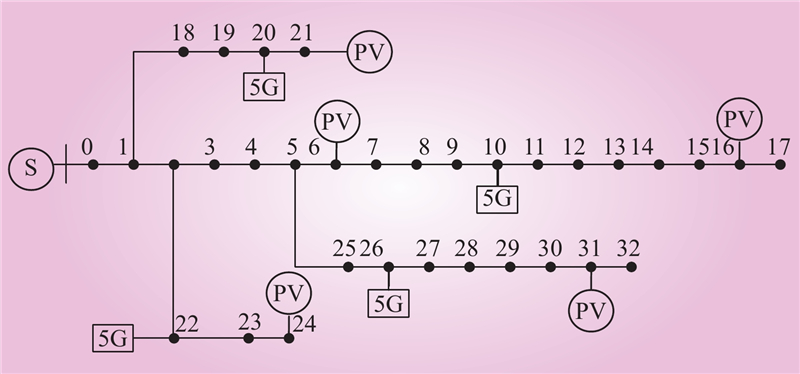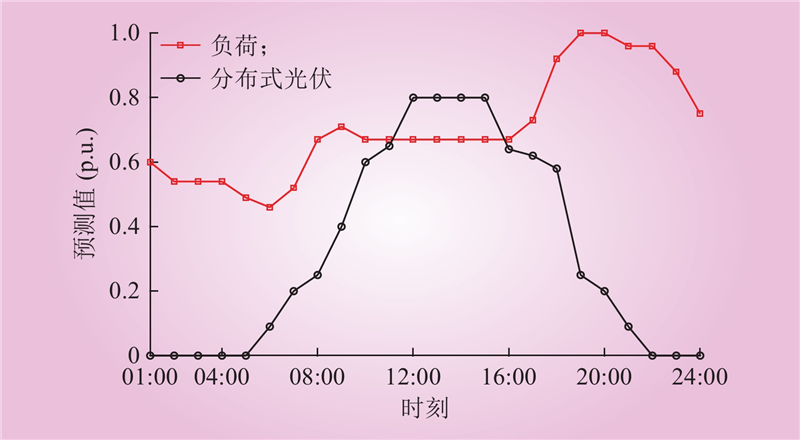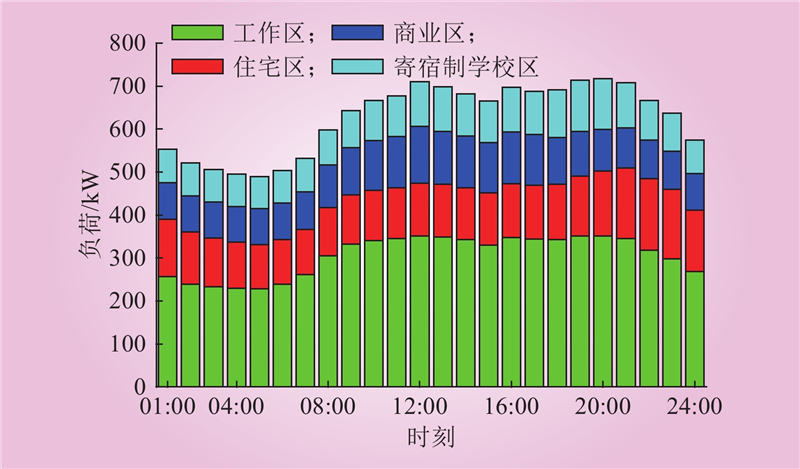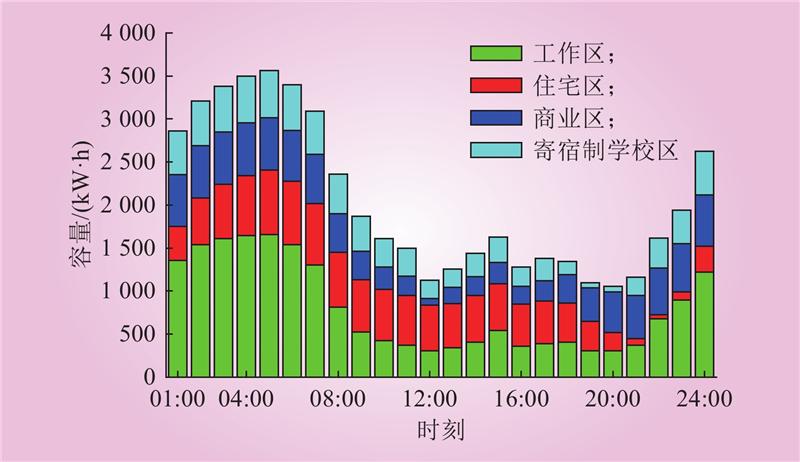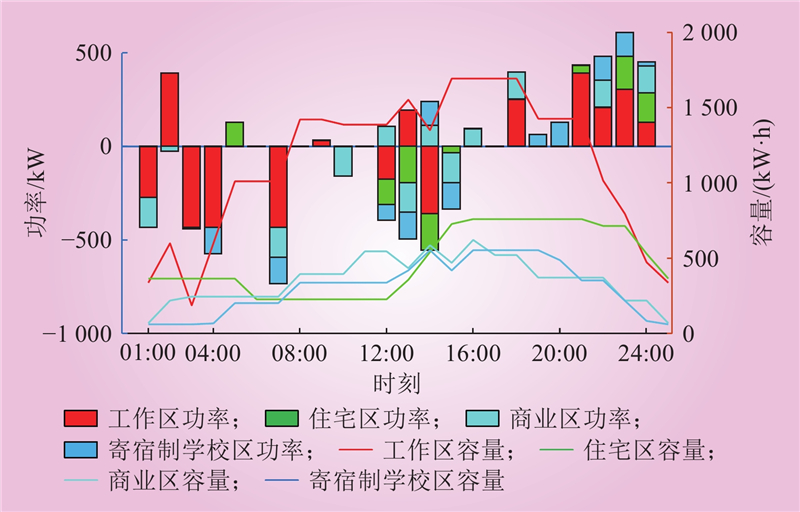| 1 |
李世辉, 王琪, 贾晓卜, 等. 考虑热泵负荷和分布式光伏的配微网协调调度[J]. 中国电力, 2022, 55 (9): 29- 37.
|
|
LI Shihui, WANG Qi, JIA Xiaobo, et al. Coordinated scheduling of distribution networks and microgrids considering heat pump load and distributed photovoltaic[J]. Electric Power, 2022, 55 (9): 29- 37.
|
| 2 |
王鹤, 王钲淇, 韩皓, 等. 使用蒙特卡罗逐时估算模型的住宅配电网光伏准入容量研究[J]. 东北电力大学学报, 2023, 43 (1): 9- 19, 2, 99.
|
|
WANG He, WANG Zhengqi, HAN Hao, et al. Research on photovoltaic hosting capacity of residential distribution network based on Monte Carlo hourly estimation framework[J]. Journal of Northeast Electric Power University, 2023, 43 (1): 9- 19, 2, 99.
|
| 3 |
卓振宇, 张宁, 谢小荣, 等. 高比例可再生能源电力系统关键技术及发展挑战[J]. 电力系统自动化, 2021, 45 (9): 171- 191.
|
|
ZHUO Zhenyu, ZHANG Ning, XIE Xiaorong, et al. Key technologies and developing challenges of power system with high proportion of renewable energy[J]. Automation of Electric Power Systems, 2021, 45 (9): 171- 191.
|
| 4 |
丁琦欣, 覃洪培, 万灿, 等. 基于机会约束规划的配电网分布式光伏承载能力评估[J]. 东北电力大学学报, 2022, 42 (6): 28- 38.
|
|
DING Qixin, QIN Hongpei, WAN Can, et al. Chance-constrained optimization-based distributed photovoltaic hosting capacity assessment of distribution networks[J]. Journal of Northeast Electric Power University, 2022, 42 (6): 28- 38.
|
| 5 |
陈卫, 杨波, 张兆云, 等. 计及电动汽车充电站接入的配电网承载能力评估与优化[J]. 电工技术学报, 2014, 29 (8): 27- 35, 45.
|
|
CHEN Wei, YANG Bo, ZHANG Zhaoyun, et al. Distribution networks supportability evaluation and optimization considering electric vehicles charging stations[J]. Transactions of China Electrotechnical Society, 2014, 29 (8): 27- 35, 45.
|
| 6 |
王丹阳, 张沈习, 程浩忠, 等. 考虑数据中心用能时空可调的电-气互联综合能源系统分布式光伏最大准入容量计算[J]. 电力系统及其自动化学报, 2023, 35 (2): 121- 131.
|
|
WANG Danyang, ZHANG Shenxi, CHENG Haozhong, et al. Calculation of maximum allowable access capacity of distributed photovoltaic in electricity-gas integrated energy system considering spatio-temporal adjustability of energy consumption by data centers[J]. Proceedings of the CSU-EPSA, 2023, 35 (2): 121- 131.
|
| 7 |
魏欣荣, 吴俊勇, 丁然, 等. 基于光伏重心理论的配电网分布式光伏最大准入容量计算[J]. 电网技术, 2023, 47 (11): 4533- 4549.
|
|
WEI Xinrong, WU Junyong, DING Ran, et al. Calculation of maximum allowable access capacity of distributed photovoltaic in electricity-gas integrated energy system considering spatio-temporal adjustability of energy consumption by data centers[J]. Distributed PV hosting capacity calculation of distribution network based on PV barycenter theory, 2023, 47 (11): 4533- 4549.
|
| 8 |
孙玲玲, 赵美超, 王宁, 等. 基于电压偏差机会约束的分布式光伏发电准入容量研究[J]. 电工技术学报, 2018, 33 (7): 1560- 1569.
|
|
SUN Lingling, ZHAO Meichao, WANG Ning, et al. Research of permitted capacity of distributed photovoltaic generation based on voltage deviation chance constrained[J]. Transactions of China Electrotechnical Society, 2018, 33 (7): 1560- 1569.
|
| 9 |
叶斌, 朱泽安, 马静, 等. 基于灵活网架的分布式光伏电源准入容量研究[J]. 电测与仪表, 2019, 56 (11): 1- 7.
|
|
YE Bin, ZHU Zean, MA Jing, et al. Research on permitted penetration capacity of distributed PV generation based on flexible network structure[J]. Electrical Measurement & Instrumentation, 2019, 56 (11): 1- 7.
|
| 10 |
陆立民, 褚国伟, 张涛, 等. 基于改进多目标粒子群算法的微电网储能优化配置[J]. 电力系统保护与控制, 2020, 48 (15): 116- 124.
|
|
LU Limin, CHU Guowei, ZHANG Tao, et al. Optimal configuration of energy storage in a microgrid based on improved multi-objective particle swarm optimization[J]. Power System Protection and Control, 2020, 48 (15): 116- 124.
|
| 11 |
刘健辰, 刘山林. 基于二阶锥松弛和Big-M法的配电网分布式电源优化配置[J]. 电网技术, 2018, 42 (8): 2604- 2611.
|
|
LIU Jianchen, LIU Shanlin. Optimal allocation of distributed power sources in distribution network based on second-order cone relaxation and Big-M method[J]. Power System Technology, 2018, 42 (8): 2604- 2611.
|
| 12 |
TORBAGHAN S S, SURYANARAYANA G, HÖSCHLE H, et al. Optimal flexibility dispatch problem using second-order cone relaxation of AC power flows[J]. IEEE Transactions on Power Systems, 2019, 35 (1): 98- 108.
|
| 13 |
COFFRIN C, HIJAZI H L, VAN HENTENRYCK P. The QC relaxation: a theoretical and computational study on optimal power flow[J]. IEEE Transactions on Power Systems, 2016, 31 (4): 3008- 3018.
DOI
|
| 14 |
金尚婷, 吴杰康, 覃炜梅, 等. 考虑风电消纳的配电网多目标无功协同优化[J]. 广东电力, 2019, 32 (1): 52- 59.
|
|
JIN Shangting, WU Jiekang, QIN Weimei, et al. Multi-objective collaborative reactive power optimization for distribution network considering wind power accommodation[J]. Guangdong Electric Power, 2019, 32 (1): 52- 59.
|
| 15 |
王晓港. 提高光伏消纳能力的配电网联络开关优化配置[J]. 电力系统及其自动化学报, 2018, 30 (9): 134- 140.
|
|
WANG Xiaogang. Optimum configuration of distribution network interconnection switch for improving photovoltaic penetration rate considering partition and segment[J]. Proceedings of the CSU-EPSA, 2018, 30 (9): 134- 140.
|
| 16 |
王文宾, 朱燕舞, 韩天华, 等. 基于随机规划的分布式光伏并网最大准入容量计算[J]. 燕山大学学报, 2018, 42 (6): 510- 518.
DOI
|
|
WANG Wenbin, ZHU Yanwu, HAN Tianhua, et al. Maximum access capacity calculation of distributed PV grid connected based on stochastic programming[J]. Journal of Yanshan University, 2018, 42 (6): 510- 518.
DOI
|
| 17 |
姜云鹏, 任洲洋, 李秋燕, 等. 考虑多灵活性资源协调调度的配电网新能源消纳策略[J]. 电工技术学报, 2022, 37 (7): 1820- 1835.
|
|
JIANG Yunpeng, REN Zhouyang, LI Qiuyan, et al. An accommodation strategy for renewable energy in distribution network considering coordinated dispatching of multi-flexible resources[J]. Transactions of China Electrotechnical Society, 2022, 37 (7): 1820- 1835.
|
| 18 |
李超, 苗世洪, 盛万兴, 等. 考虑动态网络重构的主动配电网优化运行策略[J]. 电工技术学报, 2019, 34 (18): 3909- 3919.
|
|
LI Chao, MIAO Shihong, SHENG Wanxing, et al. Optimization operation strategy of active distribution network considering dynamic network reconfiguration[J]. Transactions of China Electrotechnical Society, 2019, 34 (18): 3909- 3919.
|
| 19 |
DOROSTKAR-GHAMSARI M R, FOTUHI-FIRUZABAD M, LEHTONEN M, et al. Value of distribution network reconfiguration in presence of renewable energy resources[J]. IEEE Transactions on Power Systems, 2016, 31 (3): 1879- 1888.
DOI
|
| 20 |
乔锐勋, 王军华, 韦道明, 等. 计及后备储能及空调调度潜力的5G基站多时间尺度优化方法[J]. 电力系统自动化, 2023, 47 (4): 111- 120.
DOI
|
|
QIAO Ruixun, WANG Junhua, WEI Daoming, et al. Multi-time-scale optimization method for 5G base station considering backup energy storage and air-conditioning scheduling potential[J]. Automation of Electric Power Systems, 2023, 47 (4): 111- 120.
DOI
|
| 21 |
毛安家, 张丽婧, 盛倩倩. 考虑通信可靠性的5G基站储能聚合商优化调度研究[J]. 电工技术学报, 2023, 38 (9): 2364- 2374.
|
|
MAO Anjia, ZHANG Lijing, SHENG Qianqian. Research on optimal scheduling of 5G base station energy storage aggregators considering communication reliability[J]. Transactions of China Electrotechnical Society, 2023, 38 (9): 2364- 2374.
|
| 22 |
王艳茹, 尹喜阳, 欧清海, 等. 基于能量共享与交易协同的5G融合配电网基站储能调控方法[J]. 中国电力, 2023, 56 (6): 61- 70.
|
|
WANG Yanru, YIN Xiyang, OU Qinghai, et al. Energy storage regulation method of base stations in 5G integrated distribution network based on energy sharing and trading coordination[J]. Electric Power, 2023, 56 (6): 61- 70.
|
| 23 |
韩子颜, 王守相, 赵倩宇, 等. 计及分时电价的5G基站光储系统容量优化配置方法[J]. 中国电力, 2022, 55 (9): 8- 15.
|
|
HAN Ziyan, WANG Shouxiang, ZHAO Qianyu, et al. A capacity optimization configuration method for photovoltaic and energy storage system of 5 G base station considering time-of-use electricity price[J]. Electric Power, 2022, 55 (9): 8- 15.
|
| 24 |
RENGA D, AL HAJ HASSAN H, MEO M, et al. Energy management and base station on/off switching in green mobile networks for offering ancillary services[J]. IEEE Transactions on Green Communications and Networking, 2018, 2 (3): 868- 880.
DOI
|
| 25 |
周宸宇, 冯成, 王毅. 基于移动用户接入控制的5G通信基站需求响应[J]. 中国电机工程学报, 2021, 41 (16): 5452- 5461.
|
|
ZHOU Chenyu, FENG Cheng, WANG Yi. Demand response of 5G communication base station based on mobile user access control[J]. Proceedings of the CSEE, 2021, 41 (16): 5452- 5461.
|



